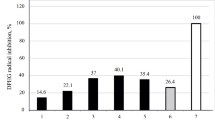Summary
1. 20 white rats and 12 guinea-pigs were injected with tubercle bacilli into the testis and the contralateral epididymis in order to compare the relative susceptibility of the two organs to the infection within the single species on one hand, and between the two species on the other.
2. In the rat the epididymis proved to be more prone to tubercular infection than the testis. The tissue of the epididymis was found to be acid, and the tissue of the testis alkaline by vital staining methods. The redoxpotential of the epididymis was found to be negative, that of the testis positive.
3. In the guinea-pig no differences could be found in the susceptibility to tuberculosis between the two organs. Nor could any chemical differences be detected by vital staining.
4. From the chemical differences existing between the two organs, as expressed under 2, and 3, and their different susceptibility to tuberculosis, it is concluded that a causal relationship between the two factors, biochemical milieu of the tissues and susceptibility to tubercular infection, is likely.
Zusammenfassung
1. In die Hoden und kontralateralen Nebenhoden von 20 weißen Ratten und 12 Meerschweinchen wurde eine Aufschwemmung von Tuberkelbacillen injiziert, um die relative Empfindlichkeit der beiden Organe innerhalb der gleichen Tierart und den zwei Tierarten untereinander zu vergleichen.
2. Der Nebenhoden der Ratte erwies sich gegen Tuberkulose bedeutend empfindlicher als der Hoden. Bei der Vitalfärbung reagiert das Nebenhodengewebe sauer, das Hodengewebe alkalisch. Das Redoxpotential des Nebenhodens ist negativ, des Hodens positiv.
3. Bei den Meerschweinchen sind Nebenhoden und Hoden in gleicher Weise tuberkulose-empfindlich. Vitalfärberisch ergaben sich zwischen Hoden und Nebenhoden keine Unterschiede.
4. Aus den biochemischen Differenzen zwischen den zwei Organen der Ratte und Meerschweinchen, wie unter 2, und 3, vermerkt, und ihrer verschiedenen Empfindlichkeit gegen Tuberkulose wird geschlossen, daß zwischen biochemischem Milieu und Empfindlichkeit gegen Tuberkulose ein kausaler Zusammenhang wahrscheinlich sei.
Similar content being viewed by others
Literatur
Allan, J. M.: The histochemistry of glycose-6-phosphatase in the epididymis of the mouse. J. Histochem. Cytochem.9, 681 (1961).
Birkhäuser, H.: Die Resistenz des Meerschweinchens gegen Tuberkulose. Schweiz. Z. allg. Path.13, 455 (1950).
Bloch, H., andE. Suter: Experimentelle Immunbiologie der Tuberkulose. Handbuch der Tuberkulose, Bd. I, p. 176. Stuttgart: Thieme 1964.
Cohrs, P.: Handbuch der Tuberkulose, Bd. I, p. 754. Stuttgart: Thieme 1964.
Cummings, M. M., P. C. Hudgins, M. C. Whorton, andW. H. Sheldon: The influence of cortisone and streptomycin on experimental tuberculosis in the albino rat. Amer. Rev. Tuberc.65, 596 (1952).
Dubos, R. J.: The effect of lipids and serum albumin on bacterial growth. J. exp. Med85, 9 (1947).
—— The effect of organic acids on mammalian tubercle bacilli. J. exp. Med.92, 319 (1950).
—— Biochemical determinants of microbial diseases. Cambridge (Mass.): Harvard Univ. Press 1954.
Dubos, R. J., andB. D. Deavies: Factors affecting the growth of tubercle bacilli in liquid media. J. exp. Med.83, 409 (1946).
——, andG. Middlebrook: Cytochemical reactions of virulent tubercle bacilli. Amer. Rev. Tuberc.58, 698 (1948).
Hart, P. d'A., andR. J. W. Rees: Enhancing effect of cortisone on tuberculosis in the mouse. Lancet2, 391 (1950).
Hirsch, J. G., andR. J. Dubos: The effect of spermine on tubercle bacilli. J. exp. Med.95, 191 (1951).
—— Biochemical factors which may influence the fate of tubercle bacilli in tissues. Ciba Foundation Symposium on experimental tuberculosis. London: Churchill 1955.
—— Antimicrobial factors in tissues and phagocytic cells. Bact. Rev.24, 133 (1960).
Höber, R.: Physikalische Chemie der Zelle und der Gewebe. Leipzig: Engelmann 1914.
Karczag, L.: Methoden der Elektropie. Abderhalden's Handbuch der Biologischen Arbeitsmethoden, Abtg. V, Teil 2,1, p. 831.
Lanz, T. von: Die reelle Acidität in den einzelnen Abschnitten des männlichen Genital-apparates der Ratte. Pflügers Arch. ges. Physiol.222, 181 (1929).
Lurie, M. B., andP. Zappasodi: On the mode of action of cortisone on the pathogenesis of tuberculosis. Ciba Foundation Symposium on Experimental Tuberculosis. London: Churchill 1955.
Mann, J.: The biochemistry of semen and the male reproductive tract. London: Methuen 1964.
Möllendorf, W. v.: Methoden zum Studium über vitale Färbung an Tierzellen. Abderhalden's Handbuch der Biologischen Arbeitsmethoden, Abtg. V, Teil 2/1, p. 97.
Montagna, W.: Some cytochemical observations on human testes and epididymides. Biology of testis. Ann. N.Y. Acad. Sci. Vol. 55, Art.4, Nov. (1952).
Netter, H., andF. Leuthard: Die Reaction der Zellen und Gewebe. In: Physiol. Chemie, II/b. Berlin-Göttingen-Heidelberg: Springer 1954.
Peyton Rous: The relative reactions within mammalian living tissues. J. exp. Med.41, 399 (1925);41, 451 (1925);41, 739 (1925).
Redenz, E.: Der Nebenhoden als morphologisches Problem. Verh. anat. Ges. 1924/25, p. 180.
Roche, P., M. M. Cummings, andP. C. Hudgins: Comparison of experimental tuberculosis in cortisone-treated and alloxan-diabetic rats. Amer. Rev. Tuberc.65, 603 (1952).
Schmid, F.: Experimentelle Immunbiologie der Tuberkulose. In: Handbuch der Tuberkulose, Bd. I, p. 293. Stuttgart: Thieme 1964.
Schulemann, W.: Die vitale Färbung mit sauren Farbstoffen. Biochem. Z.80, 1 (1917).
Schwartz, Ph.: Empfindlichkeit und Schwindsucht. Leipzig: J. A. Barth 1935.
Skarnes, R. C., andD. N. Watson: Antimicrobial factors of normal tissues and fluids. Bact. Rev.21, 273 (1957).
Spiess, H.: Experimentelle Grundlagen der Kortikosteroide bei akuter Tuberkulose. Ergebn. ges. Lungen- u. Tuberk.-Forsch., Bd. 16.
Sussig, L.: Zur Frage der Genese der Tuberkulose des männlichen Genitales. Dtsch. Z. Chir.165, 101 (1921).
Tonutti, E., O. Weller, E. Schuchart, andE. Heinke: Die männliche Keimdrüse. Stuttgart: Thieme 1960.
Woods, D. D., andM. A. Forster: Metabolic considerations relating to the life of bacteria in vivo. 14. Symposium Soc. f. General Microbiology (Cambridge 1964).
Author information
Authors and Affiliations
Rights and permissions
About this article
Cite this article
Engel, D. The influence of the biochemical milieu on the development of tubercles in the testis and epididymis. Beitr. Klin. Tuberk. 137, 353–370 (1968). https://doi.org/10.1007/BF02095956
Received:
Issue Date:
DOI: https://doi.org/10.1007/BF02095956



